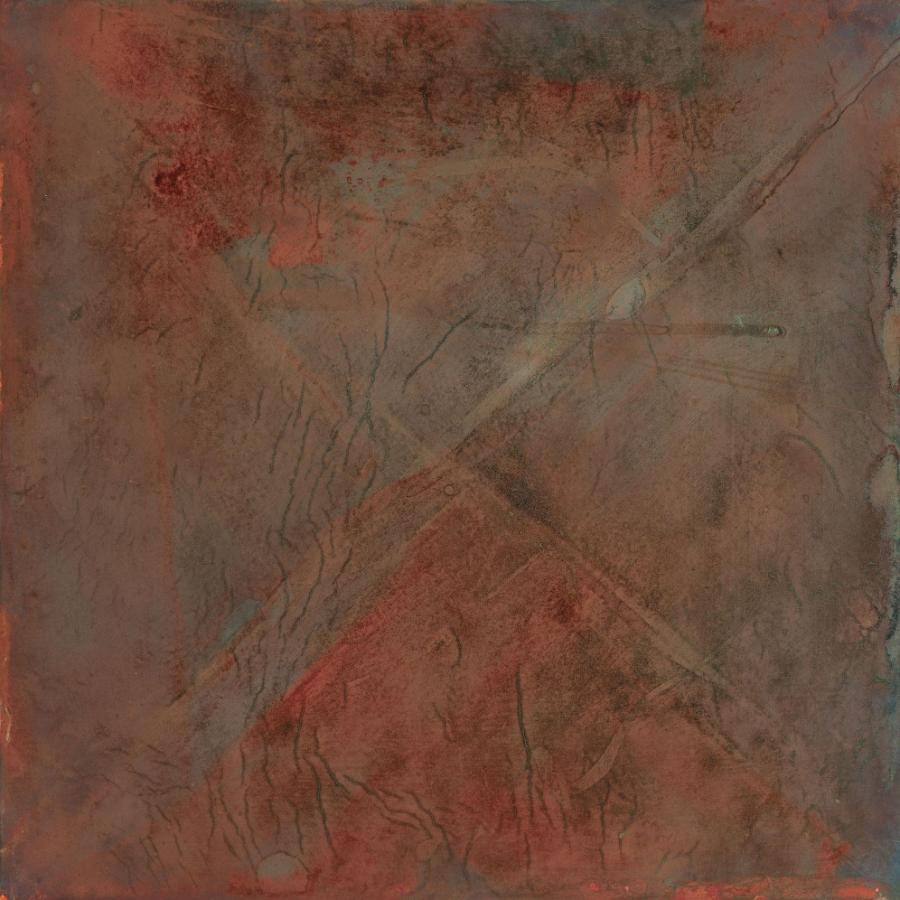Ju-nan (Passion) Panel

Makoto Fujimura
Multiple pulverized pigment and precious jewel layers, distressed, 1989
Made soon after Fujimura's baptism into the Christian faith, it offers a first clue to the thematic interests of the novel as it indicates a fumi-e and reflects on Christ’s grace. For Fujimura, “Endo himself is like the fumi-e, a historical marker birthed of a traumatic time, finally worn smooth through many disappointments, failures and betrayals, but whose surface reveals the indelible visage of a Savior.” This piece shows that: layers and layers of precious jewel and mineral pigments engage minimalist aesthetics to reveal the beauty and grace of what’s hidden. The pulverized, sanded, worn-away surface offers—through its own, fumi-e-like distress—a powerful testimony of grace on the cross and beauty in suffering.
What haunted me, and continues to haunt me to this day, is that all of the fumi-e images were worn smooth. The cast or carved images were hardly recognizable due to so many people walking over them. The image of Christ, hidden beneath the smooth surface of the fumi-e, serves as an emblem of Japanese faith to this day. And the worn surface of fumi-e also captures Japanese beauty enduring trauma.
- Silence and Beauty, Makoto Fujimura